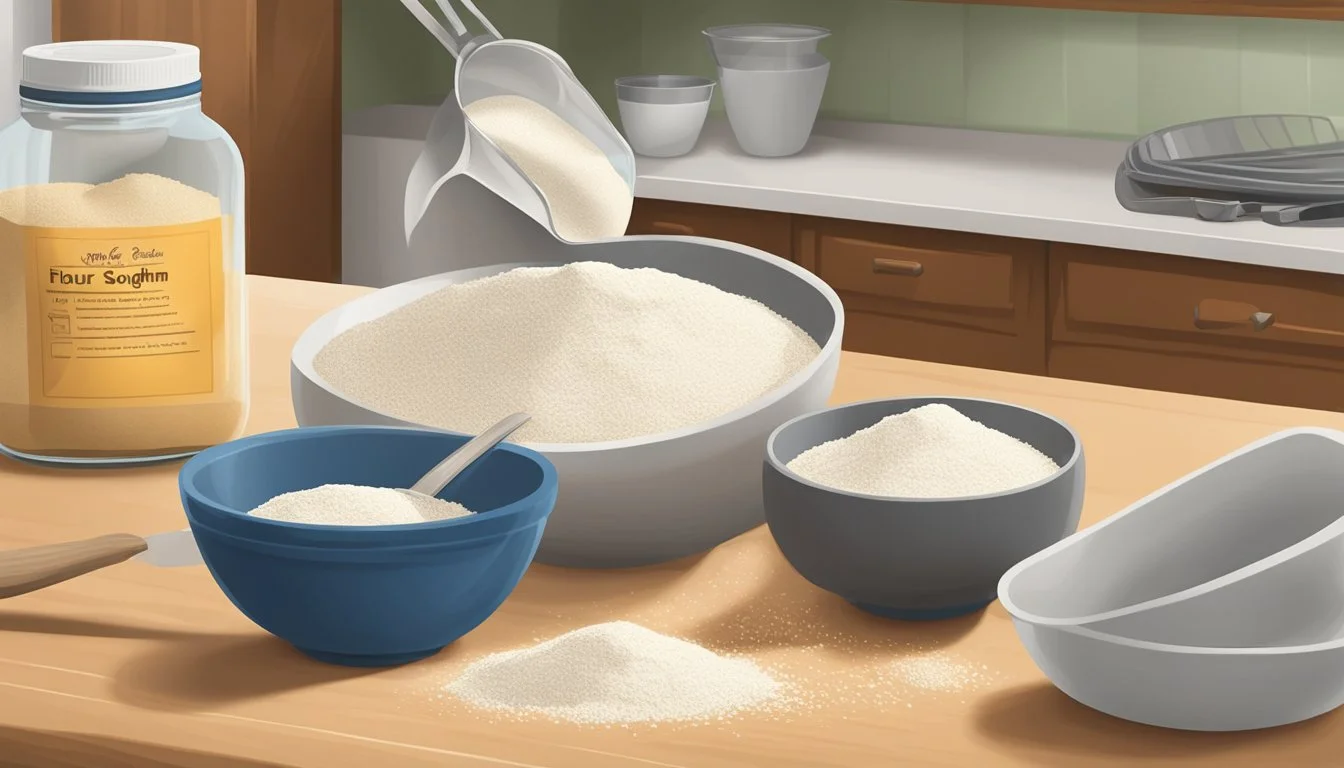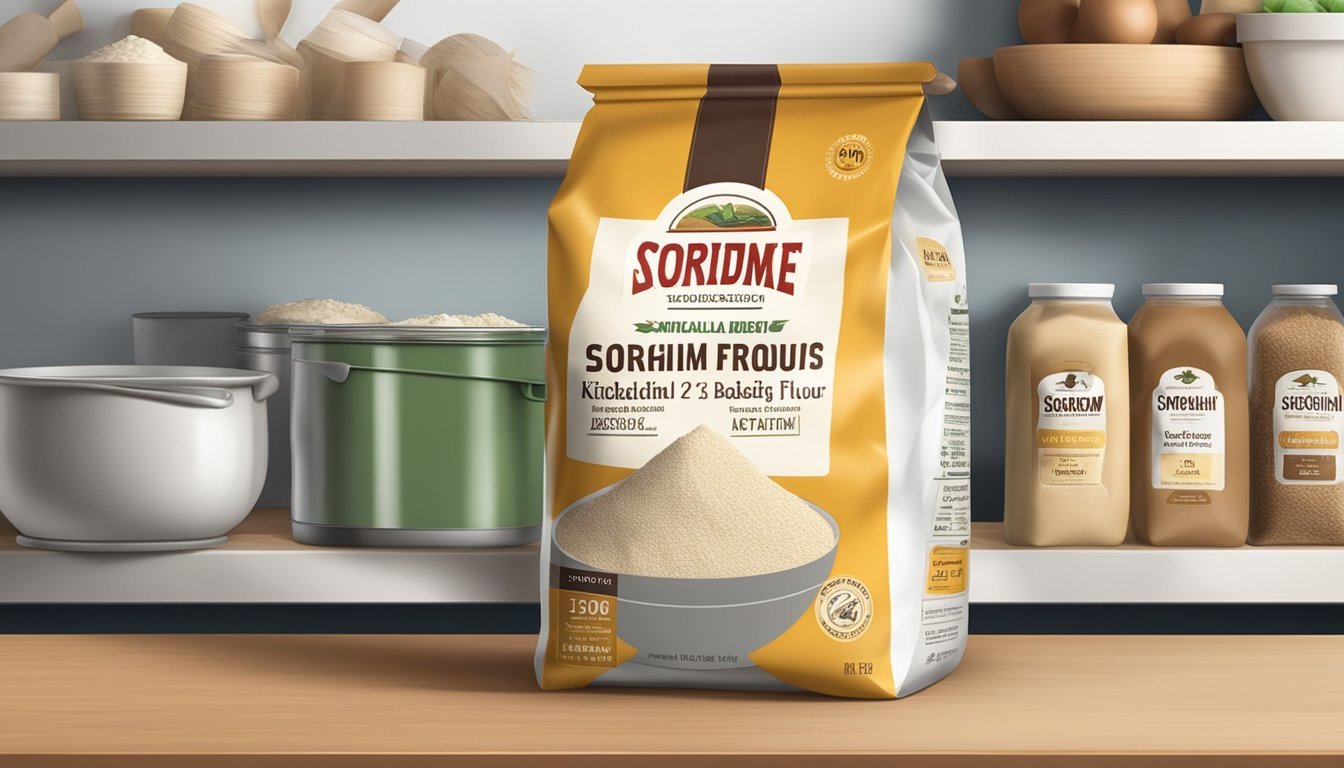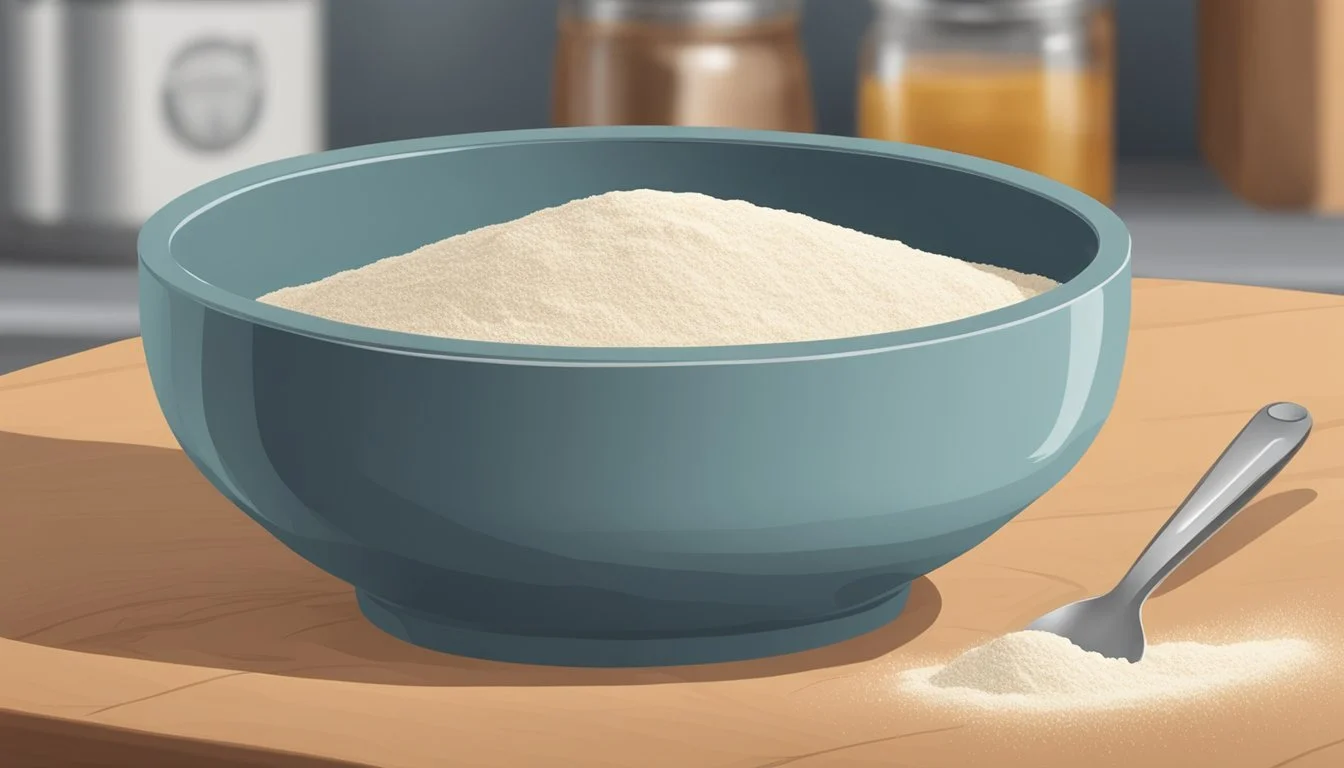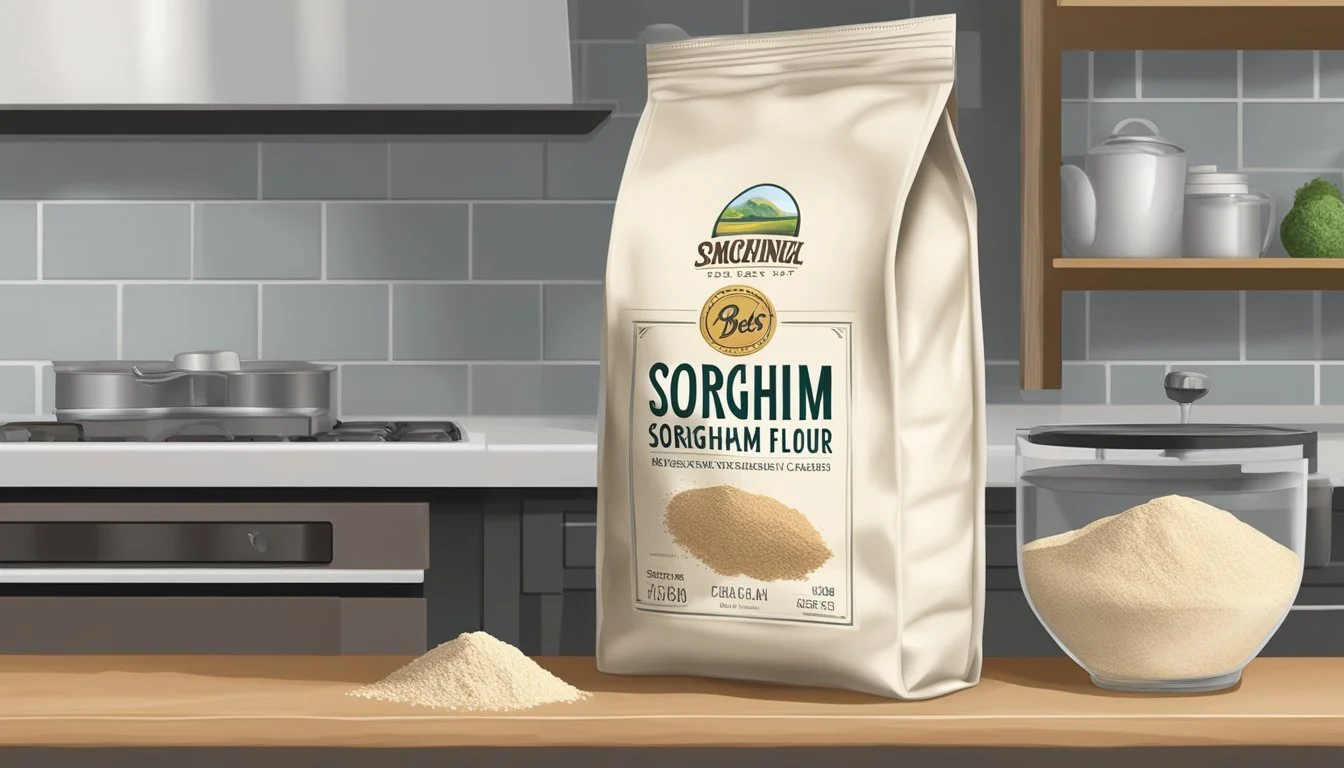How Long Does Sorghum Flour Last?
Shelf Life and Storage Tips
Sorghum flour (how long does sorghum flour last?), a gluten-free alternative to traditional wheat flour, has gained popularity for its nutritional benefits and versatility in various recipes. Understanding the shelf life of sorghum flour is important for maintaining its quality and ensuring food safety. Typically, sorghum flour can last between 6 to 12 months when stored correctly, although some variation exists between brands.
Proper storage is key to extending the life of sorghum flour. It should be kept in a cool, dry place, away from sources of heat and moisture to prevent spoilage. An unopened bag of sorghum flour may remain fresh for 3 to 4 months under ideal conditions. Once opened, transferring the flour to an airtight container can help preserve its freshness and prevent contamination from pests.
Understanding Sorghum Flour
Sorghum is a versatile cereal grain that, when ground into flour, yields a gluten-free alternative to traditional wheat flour. Known also as grain sorghum, it offers a mild flavor and smooth texture that can be used across a wide array of baking applications.
As a whole grain, sorghum flour is made from the entire kernel, preserving its natural nutrients. This flour is not only gluten-free but also provides a rich source of essential components for a balanced diet.
Here's a concise rundown of the nutritional value found in sorghum flour:
Protein: Supports muscle growth and repair.
Fiber: Aids digestion and contributes to a feeling of fullness.
Iron: Critical for the production of healthy red blood cells.
Being gluten-free, sorghum flour is a popular choice for those with gluten sensitivities or celiac disease. However, it's also commonly used in combination with other gluten-free flours to achieve the desired texture in various recipes.
From a nutritional standpoint, sorghum flour is lauded for its health benefits, including its ability to fight inflammation and support heart health, stemming from its antioxidant properties. It's also considered a low glycemic index (GI) food, meaning it digests slowly and assists in maintaining stable blood sugar levels.
By incorporating sorghum flour into diets, one benefits from a nutritious and versatile ingredient suitable for a variety of baked goods and culinary dishes.
Shelf Life Fundamentals
When assessing the shelf life of sorghum flour, understanding storage conditions, their impact on freshness, and the role of the expiration date is crucial. These factors collectively determine the quality and safety of the flour for consumption.
Optimal Storage Conditions
To maximize the shelf life of sorghum flour, it should be stored in a cool, dry place such as a pantry. It's essential to avoid direct sunlight and to maintain a consistent temperature. Storage can vary between room temperature settings and refrigeration:
Pantry or cupboard: Ensure the space is dry and not subjected to temperature fluctuations.
Refrigerator: Ideal for extending freshness beyond room temperature shelf life.
Freezer: Suitable for long-term storage, though flour should be brought to room temperature before use to prevent moisture accumulation.
Impact of Storage on Freshness
Proper storage conditions directly influence the texture, taste, color, and consistency of sorghum flour. An airtight container is recommended to protect against moisture and air, which can degrade flour quality. Fresh sorghum flour should have a uniform texture and natural smell; any deviation may indicate spoilage.
Moisture: Promotes bacterial growth and spoilage.
Air: Can lead to the oxidation of natural oils found in the flour, affecting freshness and flavor.
Expiration Date Importance
While sorghum flour doesn’t have a fixed expiration date, it's generally considered safe and maintains its quality for about 3 to 4 months when unopened. The expiration date on packaging provides a guideline, but it is not the sole indicator of freshness:
Unopened: Follow the labeled expiration date as a general standard.
Opened: Monitor the flour’s odor, smell, and consistency, and use within several months for best quality.
Expired Flour: If in doubt and past the expiration date, it's safer to discard the flour if any signs of spoilage are present.
Spoilage Indicators
When sorghum flour begins to spoil, one will notice changes that can be detected through a careful visual inspection and by utilizing their sense of smell and taste.
Visual and Textural Changes
Discoloration: Sorghum flour that is starting to spoil may develop an unusual color. Typically, fresh sorghum flour has a consistent, natural appearance, so any spots or blotches of discoloration—especially if these spots are indicative of mold growth—suggest spoilage.
Texture: A fresh batch of sorghum flour should have a fine, consistent texture. If the flour seems clumpy, damp, or has developed a texture that allows it to stick together, this could be a sign that moisture has entered the product, leading to potential spoilage.
Off Smells and Tastes
Odor: Fresh sorghum flour has a neutral or slightly nutty smell. If one detects a sour or rancid odor, this is a key sign of rancidity. A musty smell can also indicate the presence of mold or that the flour is no longer suitable for use.
Taste: Although it's not recommended to taste flour that shows any sign of spoilage, a flour that has a sour or otherwise off flavor is likely rancid and should not be consumed.
Sorghum Flour Usage
Sorghum flour is a versatile gluten-free alternative widely used for various culinary applications. It has a mild flavor which makes it suitable for both savory and sweet dishes. In baking, sorghum flour is commonly used as a substitute for traditional wheat flour. They can incorporate it as part of a flour mix, often combined with other gluten-free flours to achieve the desired texture in the finished product.
For baked goods such as cakes, cookies, and muffins, sorghum flour contributes to a denser and crumbly texture, which can be appealing for certain recipes. As a 1:1 substitute for wheat flour, chefs and home bakers often use sorghum flour in recipes that can benefit from its distinct qualities.
In addition to enhancing the texture, sorghum flour is high in protein and fiber, which can improve the nutritional profile of culinary creations. Below is a guidance list on how to incorporate sorghum flour into common recipes:
Cakes: Use sorghum flour to add a nutritious component; mix with other flours for best results.
Cookies: Ideal for adding a crumbly texture. Sorghum flour can be used entirely or as part of a flour blend.
Breads: When used in breads, sorghum flour can create a denser loaf; often combined with a rise agent for a better lift.
Muffins: Enhance the health factor using sorghum flour, but remember it may affect the moisture content.
When cooking with sorghum flour in flour mixes, it is crucial to adjust the moisture levels as it tends to absorb more liquid than other flours. In conclusion, sorghum flour is a highly adaptable ingredient in a cook's pantry, especially for those adhering to a gluten-free diet.
Comparative Shelf Lives
When comparing different flours, it is important to consider their individual shelf lives, which are influenced by their composition and processing. This section breaks down the longevity of sorghum flour in comparison to wheat flour and various gluten-free alternatives.
Sorghum Flour Versus Wheat Flour
Sorghum flour typically has a shorter shelf life than all-purpose wheat flour. Unopened sorghum flour stored in a cool, dry place can remain fresh for about 3-4 months. On the other hand, wheat flour, due to its highly processed nature, has a shelf life that can extend much further. It is common for all-purpose wheat flour to stay fresh for up to six months or more, even when stored at room temperature.
Sorghum Flour and Gluten-Free Alternatives
Compared to other gluten-free flours such as almond flour, coconut flour, arrowroot, oats, brown rice, and buckwheat, sorghum flour's shelf life falls mid-range. For example, almond flour may last for up to six months, similar to sorghum flour when properly stored. Flours like coconut flour and arrowroot can have a comparatively long shelf life if kept in ideal conditions, possibly surpassing sorghum flour. On the other end of the spectrum, some gluten-free flours like brown rice or buckwheat may have a shorter shelf life, generally around 1-3 months. Oats used to make oat flour have a notable shelf life, remaining good for up to two years when stored correctly. Hence, sorghum flour is seen as a viable gluten-free alternative with a reasonable shelf life, making it a practical option for regular use in gluten-free baking.
Prolonging Flour Freshness
Ensuring sorghum flour maintains its freshness hinges on optimal storage conditions. Temperature control and airtight solutions are paramount in extending its usability.
Refrigeration and Freezing Techniques
Refrigerating or freezing sorghum flour can significantly extend its shelf life. Flour should be kept in a cold environment, with a refrigerator typically set at or below 40°F (4°C). For even longer storage, a freezer offers a suitable environment, with temperatures at or below 0°F (-18°C). When freezing, one must ensure that the flour is stored in freezer-safe containers or bags, preventing moisture which could lead to freezer burn.
Airtight Storage Solutions
The importance of storing sorghum flour in an airtight container cannot be overstated. Oxygen exposure accelerates oxidation, leading to rancidity. Utilize containers with secure seals. Plastic bags with zip closures or glass jars with rubber gaskets are excellent choices. The container should be kept in a cool, dry place, away from direct sunlight, and sudden temperature changes to preserve the flour's quality.
Health and Nutrition Insights
Sorghum flour is a gluten-free alternative to wheat flour, considerably rich in nutrients and can support a healthy diet. It is a whole grain, which means it retains all parts of the seed—the bran, germ, and endosperm—offering a full spectrum of nutrition.
In terms of macronutrients, sorghum flour is predominantly composed of carbohydrates, making it a significant source of energy. It also contains a notable amount of protein, which is essential for muscle repair and growth.
The fiber content in sorghum is impressive as well; high fiber intake is associated with numerous health benefits, including improved digestive health and a reduced risk of chronic diseases. Sorghum also boasts a variety of minerals such as iron, which is crucial for oxygen transport in the blood.
When it comes to vitamins and antioxidants, sorghum flour contains important B-vitamins, which play a vital role in metabolism and energy production. The presence of antioxidants in sorghum has been researched for their potential role in reducing oxidative stress and may help lower the risk of chronic conditions like cancer.
Here is a brief table summarizing the key nutritional components of sorghum flour:
Nutrient Benefit Carbohydrates Energy supply Protein Muscle repair, growth Fiber Digestive health, chronic disease prevention Iron Oxygen transport B-vitamins Metabolism, energy production Antioxidants May reduce oxidative stress, cancer risk
No significant negative effects on health have been associated with the proper consumption of sorghum flour, making it a valuable ingredient for those managing gluten sensitivities or seeking a nutritious grain option.
Preventing Contamination and Infestation
Effective storage solutions for sorghum flour focus not only on maximizing shelf life but also on preventing contamination and infestation by insects and pests. Proper protection from moisture and heat is crucial to maintain the flour's quality.
Insect and Pest Management
To prevent infestation in sorghum flour, it's advisable to store the flour in airtight containers. Insects and pests are attracted to food sources, and sealing the flour can vastly reduce the risk. It's also important to regularly inspect pantry areas for signs of these contaminants, such as webbing or larvae, and to keep the storage area clean. Discarding any infested food promptly helps prevent the spread of bugs to other stored food products.
Protection from Moisture and Heat
Sorghum flour is best preserved in a cool and dry environment. Ideal storage conditions include:
Temperature: The pantry or storage space should be kept at a consistent temperature, preferably below 70°F (21°C).
Humidity: It's vital to maintain low humidity levels, as high moisture can lead to spoilage. A dehumidifier can be used in particularly humid environments.
Storing flour in the refrigerator or freezer can extend its freshness, but it must be sealed properly to prevent moisture from condensing inside the container, which could cause clumping and mold growth.
Sustainability After Opening
When sorghum flour is opened, its longevity is influenced by how it is stored. To sustain the flour's quality after opening, one should transfer it to an airtight container. This could be a sealed plastic bag or a glass jar with a tight lid. The purpose of this container is to prevent exposure to air, which can introduce moisture or contaminants that accelerate spoilage.
Proper sealing is critical. If the flour is not sealed correctly, it becomes more susceptible to pests and humidity, which can significantly reduce its shelf life. Users are advised to check the seal of the container each time after use to ensure that it is secure.
While not always necessary, some may choose to refrigerate sorghum flour to extend its shelf life. Refrigeration is beneficial, especially in humid or warm climates where pantry storage might not keep the flour dry enough.
Here are some best practices for storing opened sorghum flour:
Transfer flour to an airtight container: This limits exposure to elements that can deteriorate its quality.
Keep it cool and dry: A pantry or cupboard away from heat sources and moisture is ideal.
Consider refrigeration: If living in a warm environment, refrigeration can extend the flour's usability.
Adhering to these storage recommendations helps maintain the flour's freshness and usability for up to six months after opening. Users should regularly check the flour for signs of spoilage, such as a change in smell or the presence of pests, and discard it if these signs are evident.
Additional Flour Preservation Tips
To maintain the quality and extend the shelf life of sorghum flour, one must ensure it is stored in optimal conditions and manage its fat content.
Ideal Environmental Conditions
Storing sorghum flour correctly involves keeping it in conditions that minimize exposure to elements that can expedite degradation. A storage environment should be cool, dry, and away from direct sunlight to prevent the adverse effects of moisture and heat, which can lead to rancidity and the development of free radicals.
Temperature: Aim for below 70°F (21°C) for standard pantry storage.
Humidity: Keep the relative humidity low, ideally around 50% if possible.
Sorghum flour should be placed in a dark place such as a closed pantry or cupboard to protect it from light.
Managing Fats and Oils Content
Sorghum flour contains natural fats and oils, which are prone to rancidity over time, especially when exposed to air. To minimize the risk and preserve the flour's freshness:
Air Exposure: Seal the flour in an airtight container to protect it from oxygen.
Containers: Use glass jars or vacuum-sealed bags to reduce the presence of free radicals that can spoil the flour.
Remember that the fats and oils in sorghum flour can also absorb odors; hence, it should be stored away from strong-smelling substances.
Significance of Texture and Flavor
When assessing the shelf life of sorghum flour, one cannot overlook its texture and flavor characteristics, as these are indicative of its freshness. Ideally, sorghum flour exhibits a fine, smooth consistency. Over time, should the flour develop any form of clumping or change in texture, this may suggest moisture infiltration and potential spoilage.
The inherent taste of fresh sorghum flour is typically neutral with a slightly sweet undertone, owing to its nutty flavor profile. Any deviation from this, such as a stale or sour taste, signals that the flour is past its prime.
Regarding color, sorghum flour presents a pale cream hue. Discerning consumers should be vigilant for any discoloration, including:
Dark spots
Off-white coloration
Color changes may imply that the flour has been compromised and should not be used in cooking or baking. Since sorghum flour is often lauded for its gluten-free qualities and unique flavor in baking, the preservation of these attributes is crucial for quality baked goods.
Substitutes and Alternatives
When sorghum flour is unavailable or one desires an alternative, there are several suitable substitutes to consider. These options cater to various dietary requirements, including gluten-free alternatives.
Gluten-Free Grain Alternatives:
Millet Flour: Nutritionally rich and mimics sorghum's texture.
Quinoa Flour: A protein-packed option with a distinct, nutty flavor.
Rice Flour: Light and mild, perfect for delicate baked goods.
Starch and Flour Options:
Potato Starch: Offers a fluffy texture, ideal for cakes and bread.
Tapioca Flour: Yields a chewy texture, commonly used in gluten-free recipes.
Coconut Flour: High in fiber, but requires increased liquid in recipes.
Seed and Nut Flours:
Almond Flour: Provides a moist crumb and rich flavor, but is high in fat.
Buckwheat Flour: Despite its name, it's gluten-free and has a robust taste.
Chickpea Flour: Offers added protein and a hearty texture.
Each substitute has its unique properties and should be used considering the desired outcome of the recipe. Some may alter the flavor profile or texture of the final dish. It is recommended to start with small substitutions and adjust the recipe as needed.
Sorghum in Culinary Practices
Sorghum, a versatile and nutritious cereal grain, plays a vital role in culinary practices around the world. It is particularly renowned for its application in gluten-free baking and its utilization across various global cuisines.
Application in Recipes and Baking
Sorghum flour, made from ground sorghum grain, offers a slightly sweet flavor and a smooth texture, making it appealing for baking. It is widely used as a gluten-free alternative to wheat flour in an array of recipes. Being a high-fiber, protein-rich flour, it lends a unique nutritional profile to baked goods such as breads, muffins, and cookies. Here's how sorghum flour can be included in baking:
Breads and Cakes: Provides structure and a tender crumb
Muffins and Pancakes: Adds a light, airy quality
Sorghum is also used in the form of syrup, known as sorghum syrup (how long does sorghum syrup last?), which imparts a natural sweetness to recipes, acting as a substitute for molasses or honey.
Global Uses of Sorghum
Globally, sorghum's adaptability in various climates has seen its integration into a spectrum of regional culinary practices. In African and Asian cuisines, sorghum grain is commonly cooked similarly to rice or quinoa, serving as a staple food source. Here are notable examples of its international use:
In Africa: A primary ingredient in traditional porridges and fermented beverages.
In the United States: Sorghum syrup is a traditional sweetener in the South.
In Asia: Sorghum serves as a base for alcoholic beverages and is steamed like rice.
As a cereal grain with ancient roots, sorghum continues to enrich culinary traditions by offering a gluten-free solution that caters to diverse dietary needs and preferences across the globe.
FAQs About Sorghum Flour
In discussing sorghum flour, readers often have questions about its shelf life and how it compares to other flours. This section addresses those specific inquiries with precise details.
Shelf Life after Expiration Date
Sorghum flour, a gluten-free alternative to wheat flour, has a typical shelf life. Unopened and stored correctly in a cool, dry place, it can last about 3 to 4 months. Once expired, it's advised to discard the flour, as its quality might no longer be ideal for consumption or baking purposes.
Difference Between Sorghum and Other Flours
Sorghum flour, often referred to as jowar flour, is distinguished from other types of flour by its gluten-free composition and a mild, sweet flavor profile. While all-purpose flour derived from wheat is commonly used in various recipes, sorghum's versatility makes it an excellent substitute for gluten-free cooking. It has a shorter shelf life compared to wheat flour due to its gluten-free nature which does not preserve as long.
Conclusion
Sorghum flour, a whole-grain option popular for its nutritional benefits, typically has a shorter shelf life than more processed flours. Unopened and stored in optimal conditions—in a cool, dry place within a pantry—it maintains its freshness for approximately 3 to 4 months. Once opened, it is advisable to transfer the flour to an airtight container to prolong its shelf life, prevent moisture absorption, and deter pests.
Whole sorghum grains, if properly stored, can remain usable for much longer, up to three years. Sorghum flour, conversely, may last for a slightly extended period of up to six months when kept under ideal storage conditions.
When incorporating sorghum flour into recipes, its shelf life isn't the only consideration. It should also be noted that sorghum flour can impart a sour flavor and a dry mouthfeel if it constitutes more than 25 to 30 percent of the flour mixture in baked goods. Nonetheless, its high fiber content and presence of antioxidants make it a valuable addition to a healthy diet.
To summarize, those using sorghum flour should be mindful of its shelf life and storage requirements to ensure they experience its full health-related and gastronomical benefits.













